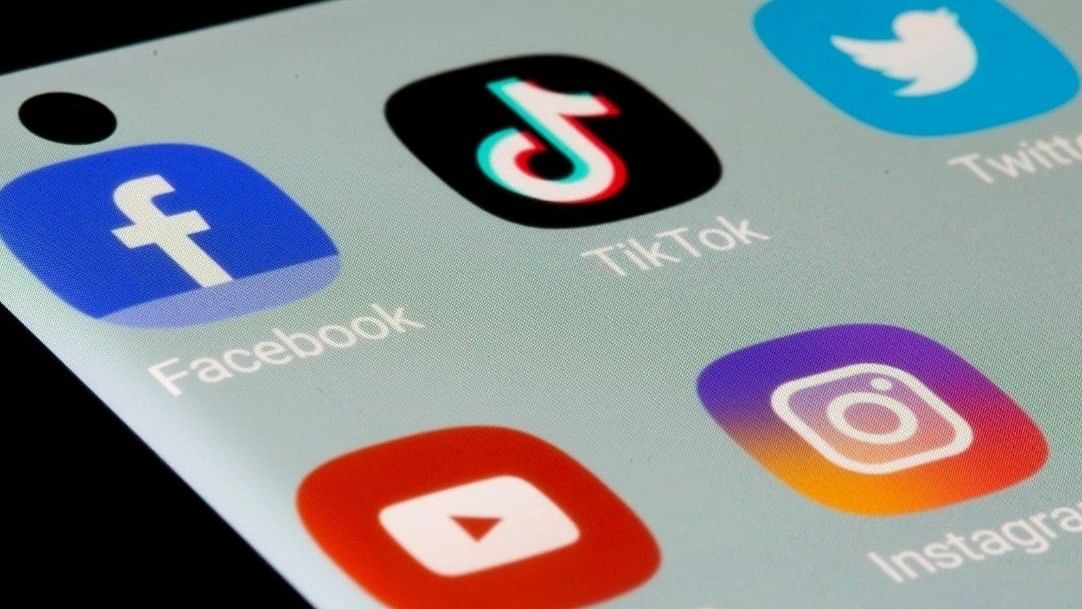
Social media apps on a phone.
Credit: Reuters File Photo
Social media in South Asia isn't just a platform for selfies and cat videos; it's now a volatile cocktail of misinformation, hate speech, and violence, with real-world consequences dancing on the digital razor's edge.
A thorough scrutiny of social media is warranted, especially because the next few weeks and months will see elections across many countries, including India.
Dancing with the digital demon
Data tells a grim story: hate speech spews like venom from anonymous accounts, fabricated narratives spread faster than wildfires, and violence erupts on the streets, often ignited by the sparks of online vitriol. Platforms like Facebook, X, and WhatsApp, originally meant to connect, have become battlegrounds for bigotry, their algorithms amplifying hateful narratives and turning echo chambers into cauldrons of rage.
This isn't some abstract concern. Look at the 2020 India’s Delhi riots, fuelled by WhatsApp misinformation, where over 50 lives were lost in a religious inferno. See the 2021 attacks on Bangladeshi Hindus, sparked by a fabricated Facebook post, leaving temples desecrated and communities traumatised. Witness the 2019 Sri Lankan Easter bombings, where online hate speech may have played a role in the radicalisation of the attackers, or Facebook posts calling for violence against the Madhesi community sparked clashes and protests in Nepal. These are just a few grim examples of how the digital demon of social media is playing a deadly game in the form of fake digital nationalism in South Asia.
A conservative estimate for the total number of social media users in South Asia as of October is around 961 million. With such vast number of people accessing these social media platforms, the key questions before policy-makers on social media are: how do social media algorithms, designed for engagement, contribute to the spread of hate speech and misinformation; what role do anonymous accounts and bots play in amplifying harmful narratives and inciting violence on social media platforms; what are the specific ways in which social media platforms exploit religious, ethnic, and caste sensitivities in the region?
Most importantly, what is the role of governments and civil society organisations in holding social media platforms accountable for the harmful content they host? There are two other important questions, always debated in the region: first, how can we balance the need to curb online hate and misinformation with upholding freedom of expression and democratic values? Second, what are the long-term consequences of exposure to hate speech and misinformation on social media for individuals and communities?
There is so far no convincing answers to these questions, which is affecting millions of social media users in the region. Social media platforms for their political biases towards the governments in power to generate revenue are surprisingly silent in investing on these questions and address these pertinent questions.
The common pattern of creating social tension through these platforms in South Asia are to share misinformation and fake news, trolling and abusing religious minorities, using derogatory language and hate symbols, organising online campaigns to incite violence, sharing caste-based slurs and discriminatory content, inciting violence against ethnic and religious minorities, spread blasphemy accusations, and inciting violence against journalists and activists.
Silence is violence
A 2020 study by the University of Oxford analysed over 250 million tweets related to India and Pakistan. The research found that 12 per cent of these tweets contained hate speech, with the majority targeting religious minorities and political opponents. The hashtag #FreeRohingya has been used over 40 million times on X, highlighting the plight of the Rohingya Muslim minority in Myanmar. However, the online campaign has also been marred by calls for violence against Myanmar nationals and the spread of misinformation about the conflict. In the aftermath of the 2019 Easter bombings, social media platforms in Sri Lanka saw a surge in anti-Muslim hate speech. The hashtag #SinhalaRavaya (Sinhalese Power) gained traction, further dividing the country along ethnic lines.
Silencing the digital mob
What is the solution? It is important to identify and remove biased algorithms. The platforms have a responsibility to audit their algorithms for bias that amplifies hateful content and unfairly targets marginalised groups. Removing or correcting such biases can significantly reduce exposure to hate. It is also important to train AI systems to understand the context and intent behind language, distinguishing genuine criticism from hateful attacks. This requires ongoing investment in natural language processing and human oversight.
With so much hate in social media, there is a strong need to develop a spectrum of consequences for varying degrees of harm, ranging from warnings and temporary suspensions to permanent bans. There is also a need to encourage bystander intervention by making it simple and safe to report hateful behaviour.
{Sachi Satapathy is Director, AF Development Care (AFDC).}
(Disclaimer: The views expressed above are the author's own. They do not necessarily reflect the views of DH.)